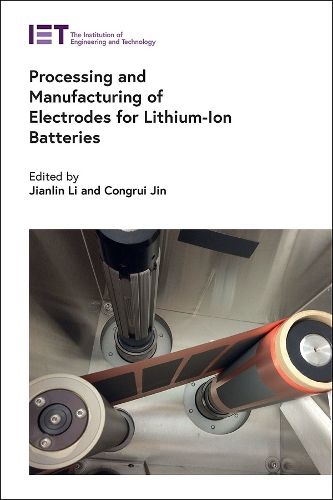Readings Newsletter
Become a Readings Member to make your shopping experience even easier.
Sign in or sign up for free!
You’re not far away from qualifying for FREE standard shipping within Australia
You’ve qualified for FREE standard shipping within Australia
The cart is loading…






Lithium-ion batteries (LIBs) are key to storing clean energy. However, process design, including electrode processing, is critical for performance. There are many reviews addressing material development for LIBs, but comparatively few on correlating the material properties with processing design and constraints. While these technologies are becoming familiar in industry, they are not yet widely accessible to the research community.
This book provides a comprehensive and critical view of electrode processing and manufacturing for Li-ion batteries. Coverage includes electrode processing and cell fabrication with emphasis on technologies, relation between materials properties and processing design, and scaling up from lab to pilot scale. Outlining the whole process of Li-ion battery fabrication, chapters cover materials for Li-ion batteries, slurry preparation, coating, laser materials processing, additive manufacturing, dry processing, electrode drying, aqueous cathode processing, electrolyte filling and formation of cells, simulation-assisted electrode processing, as well as quality control.
Processing and Manufacturing of Electrodes for Lithium-Ion Batteries bridges the gap between academic development and industrial manufacturing, and also outlines future directions to Li-ion battery electrode processing and emerging battery technologies. It will be an invaluable resource for battery researchers in academia, industry and manufacturing as well as for advanced students in related subjects.
$9.00 standard shipping within Australia
FREE standard shipping within Australia for orders over $100.00
Express & International shipping calculated at checkout
Lithium-ion batteries (LIBs) are key to storing clean energy. However, process design, including electrode processing, is critical for performance. There are many reviews addressing material development for LIBs, but comparatively few on correlating the material properties with processing design and constraints. While these technologies are becoming familiar in industry, they are not yet widely accessible to the research community.
This book provides a comprehensive and critical view of electrode processing and manufacturing for Li-ion batteries. Coverage includes electrode processing and cell fabrication with emphasis on technologies, relation between materials properties and processing design, and scaling up from lab to pilot scale. Outlining the whole process of Li-ion battery fabrication, chapters cover materials for Li-ion batteries, slurry preparation, coating, laser materials processing, additive manufacturing, dry processing, electrode drying, aqueous cathode processing, electrolyte filling and formation of cells, simulation-assisted electrode processing, as well as quality control.
Processing and Manufacturing of Electrodes for Lithium-Ion Batteries bridges the gap between academic development and industrial manufacturing, and also outlines future directions to Li-ion battery electrode processing and emerging battery technologies. It will be an invaluable resource for battery researchers in academia, industry and manufacturing as well as for advanced students in related subjects.